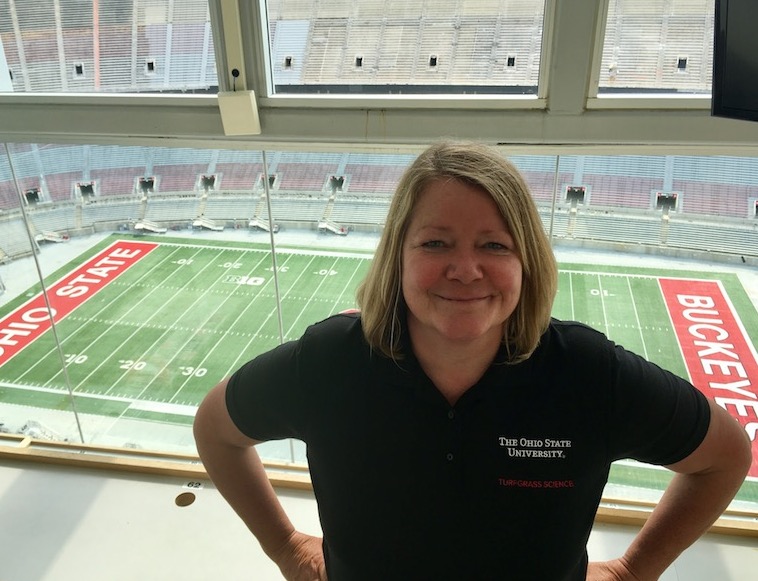Q: How can we approach the challenge placed upon many sports field managers in northern states who have had their fall sports season pushed back to the following spring?
— Joe Churchill, Plymouth, Minn.
A: This is a tough one, since many fields in the northern states will still be frozen or snow-covered in March. Frozen and/or thawing fields could be unsafe for the field user and they would be destroyed quickly, which is not ideal at the beginning of the spring playing season.
My first suggestion would be to schedule games on local synthetic fields until the natural fields are ready. The Synthetic Turf Council (STC) recommends removing snow at the last minute to prevent re-accumulation and the possible formation of ice. STC also advises against using a tarp on the field as it can freeze to the surface.
With regard to natural grass fields, there are many ways they can be primed for early play, and it starts with preparations now. This includes fall cultural practices such as soil cultivation/aeration, topdressing, dormant seeding and fertilization. These operations carried out together produce a much greater result than doing them on their own, and give the field the best possible start the following spring.
The subject of fertilization needs to be revisited, because the recommendations in regard to the later season fertilizer (LSF) application have changed somewhat. LSF refers to the late fall application, usually made around Thanksgiving, when the grass is still green but has ceased growing. The nitrogen source was typically quick-release and applied
at a high rate of 1-1.5 lbs. N/msf (49-73 kgs/ha). Research undertaken in the late ‘80s at OSU showed a great spring green-up response after the LSF application, without the flush of top growth typically seen at that time of year. The study also showed that while the net effect of late fall fertilization on rooting was slight, applications in late fall were more beneficial with respect to rooting than an early spring application. This is because early spring fertilizer applications can cause excessive top growth at the expense of root growth. But more recent research has shown that the turf’s response (nutrient uptake) to this late-season application is determined by how cold the weather is, with only a small percentage of the nitrogen taken up in cold weather conditions with low ET rates. There is also an increased
risk of leaching when applying soluble N as temperatures drop below 50o Fahrenheit (10oC). A turf stand’s response
to nitrogen is further influenced by how old the stand is, with turf older than 7-10 years requiring less input. As sports field managers, we have an obligation to make sure we do not over-apply soluble nitrogen that might be subject to leeching and runoff and adversely affect water quality. Current recommendations from academic turf programs have included lighter rates of 0.3-0.5lbs N/msf (15-25kgs/ ha) of a quick-release source of nitrogen in a complete fertilizer product at the end of October. That rate depends on turfgrass species and whether fields are in use, with highly trafficked fields needing the higher rate for recovery. Higher rates could also be applied to newly established, or younger turf stands. The late October application would complete the standard fall fertilization program for cool-season fields, which typically includes an application in late August, another in late September, and now in late October.
Additional practices to enhance greening include fall applications of a plant growth regulator (PGR) like trinexapac-ethyl, which produced great results with early spring green-up. Using growth covers to extend the fall playing season or kick-start the spring season is also a proven tool. Growth covers might seem cost prohibitive to some, but the benefits they offer make them a sound investment.
Good luck!
Pamela Sherratt is sports turf extension specialist, The Ohio State University. Her Q&A column appears in SportsField Management magazine.
Questions?
Send them to Pamela Sherratt at 202D Kottman Hall, 2001 Coffey Road, Columbus, OH 43210 or sherratt.1@osu.edu
Or, send your question to Dr. Grady Miller, North Carolina State University, Box 7620, Raleigh, NC 27695-7620, or grady_miller@ncsu.edu


